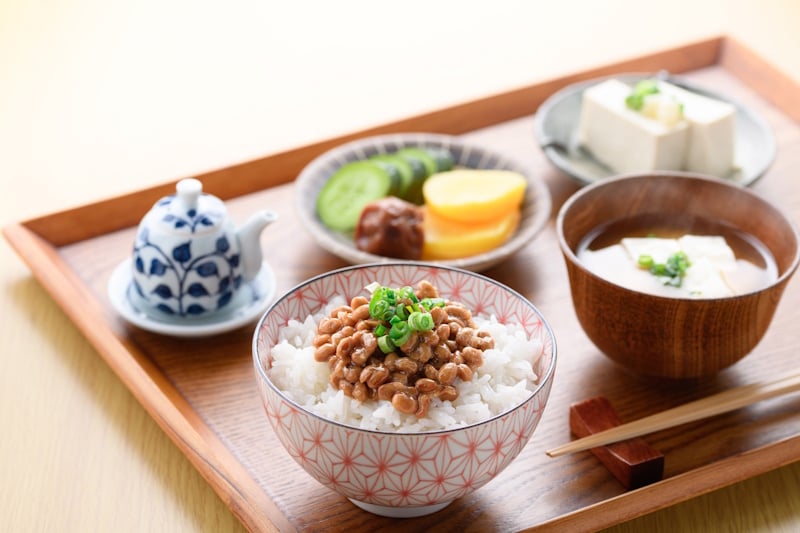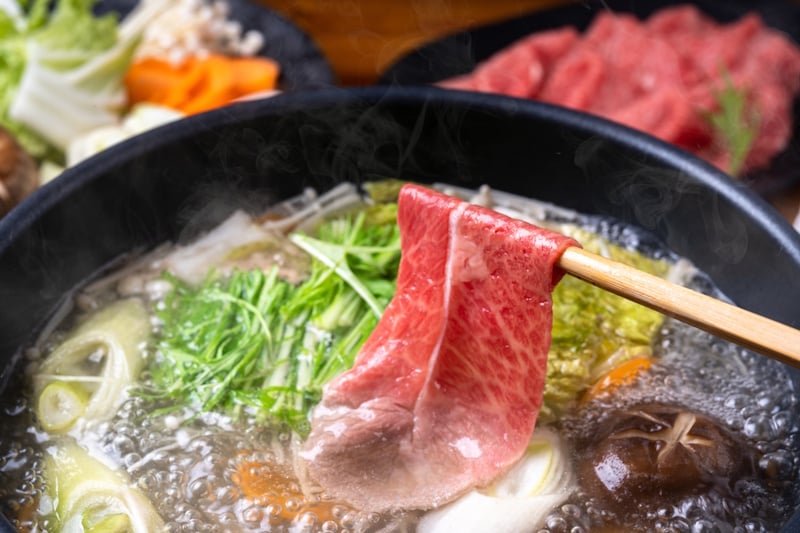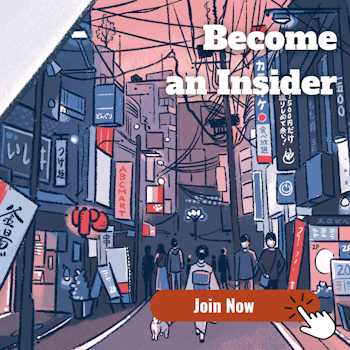A quiet revolution is taking place at Kyoto’s ryokans, Japan’s traditional inns. Many are ditching the two meals a day that ryokans traditionally serve. The driver? Inbound tourists who aren’t used to authentic Japanese food.
Not the “Japanese food” people were expecting
 When it comes to nattō, many tourists say, “Nattō-ku dekinai” (Picture: 株式会社うめ海鮮@フォト / PIXTA(ピクスタ))
When it comes to nattō, many tourists say, “Nattō-ku dekinai” (Picture: 株式会社うめ海鮮@フォト / PIXTA(ピクスタ))
A typical ryokan is an inn with tatami-mat floors and public areas such as communal baths. A mainstay of travel dating back to Japan’s 8th century, ryokans have been declining for a while, largely thanks to the increasing prevalence of cheaper Western-style hotels. The number of ryokans has declined since 1990, with the number of ryokans in Japan dwindling by half in the past 25 years.
Ryokans might find some saving grace in the massive influx of tourists to the country. People coming to experience Japan from abroad are more inclined than domestic travelers to choose an option with an aura of history about it.
If there’s one thing that foreign tourists don’t like about ryokans, however, it’s the food.
Traditionally, most ryokans will offer both breakfast and dinner in their rooms or in communal dining halls to guests. However, some ryokan say they’re now scaling that back. Tourists are fueling their businesses – and most aren’t accustomed to washoku (和食), or Japanese food. Most washoku dishes contain plain-tasting food and ingredients, such as fish and fish-derived products, konnyaku, and tofu. That betrays tourists’ expectations of Japanese food, which centers primarily around rich, internationalized dishes such as roll sushi, yakiniku, sukiyaki, and tonkatsu.
Opting for the combini instead
 Some ryokan are switching to foods like shabu-shabu that are more in line with foreigner’s conception of “Japanese food.” (Picture: プロモリンク / PIXTA(ピクスタ))
Some ryokan are switching to foods like shabu-shabu that are more in line with foreigner’s conception of “Japanese food.” (Picture: プロモリンク / PIXTA(ピクスタ))
Toyo Keizai interviewed four Kyoto ryokans (anonymously) about their food options. One ryokan, which says 90% of its business is now overseas tourists, said it decided to stop serving food altogether once its chef retired. They report that many foreign customers, after eating a single meal, would ask the staff not to bring food the next day. Staff have witnessed many going to the combini to get breakfast instead.
The ryokan, which has been operating for 100 years, worried that not offering food would betray its tradition. However, it’s had to deal with so many people canceling food and disputing charges that the hassle became more trouble than it was worth. The facility also stopped making bento boxes for visitors for the same reason.
The other ryokan that Toyo polled are taking different tactics. One canceled its bento boxes in favor of booking restaurant reservations for customers, alleviating the language gap for foreign visitors. Another switched to offering foreign visitors a stay-only plan with no meals.
Planning a trip to Japan? Get an authentic, interpreted experience from Unseen Japan Tours and see a side of the country others miss!

“Noah [at Unseen Japan] put together an itinerary that didn’t lock us in and we could travel at our own pace. In Tokyo, he guided us personally on a walking tour. Overall, he made our Japan trip an experience not to forget.” – Kate and Simon S., Australia


Want more news and views from Japan? Donate $5/month ($60 one-time donation) to the Unseen Japan Journalism Fund to join Unseen Japan Insider. You’ll get our Insider newsletter with more news and deep dives, a chance to get your burning Japan questions answered, and a voice in our future editorial direction.

Stay connected while in Japan with an eSim from our partners at Inbound Platform. Get fast and unlimited 5G data, access across 99% of the country, and excellent English language customer service. No chip to install – just download into your phone and use as soon as you land! (Affiliate link)

Get the white-glove treatment with a luxury ride from the airport – Haneda, Narita, or Osaka (KIX) – with Inbound Platform’s taxi service. Your driver will be waiting for you at the airport. If there are issues, you can depend on their highly-rated English language customer support. (Affiliate link)

Want to speak better Japanese before your trip to Japan? Or just for fun? Use Preply to connect with a native speaker and practice, no matter where you are in the world. Improve your Japanese while also making new friends and learning about Japanese culture and history. (Affiliate link)
Finally, one ryokan still offers food – but switched its menu to foreigner-friendly favorites like sukiyaku and shabu-shabu. They say it’s been a huge hit.
Certainly, there’s a risk to this strategy. If tourism to Japan dries up, ryokans could have to fall back to catering to domestic tourists, who’ll generally expect full-on meal service with traditional Japanese food. With the yen gaining momentum in international currency markets again, and the United States upending global trade, some businesses may have to make a U-turn if the world economy takes a dive.
Perhaps I’m overly optimistic, but I don’t see tourism to Japan cratering anytime soon. The country is a perennial draw and “bucket list” tourist destination for many. I think that demand will only increase, especially as more businesses are more than willing to change their operations to align reality with foreign tourists’ expectations.
Sources
京都で”1泊2食付き”をやめる旅館が続出。「素泊まり」「飲食店の予約代行」にシフトの背景には外国人観光客の≪正直な本音≫があった. Toyo Keizai
温泉旅館が25年間ほぼ半減「泊食分離」絶品料理でニッポンの危機を救う!:ガイアの夜明け. TV Tokyo Plus


AloJapan.com